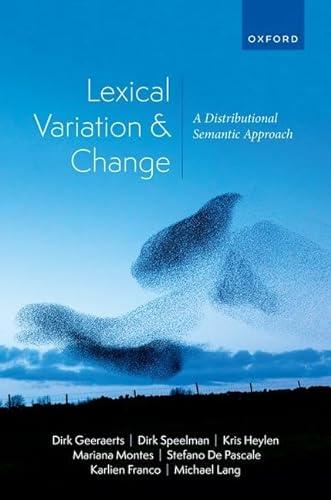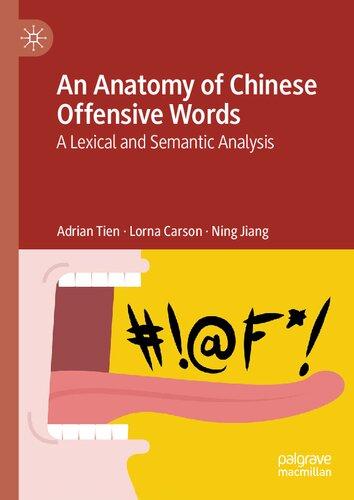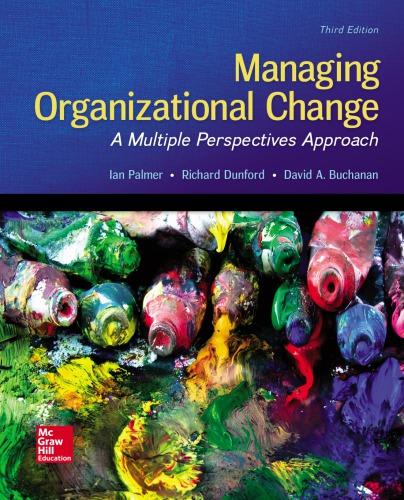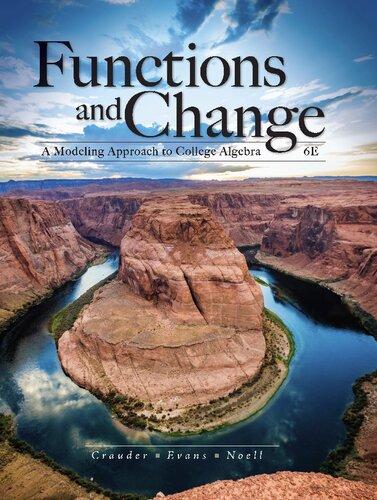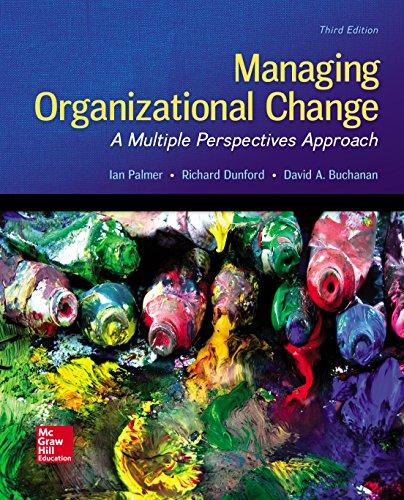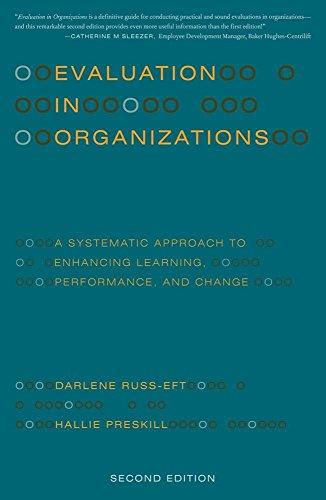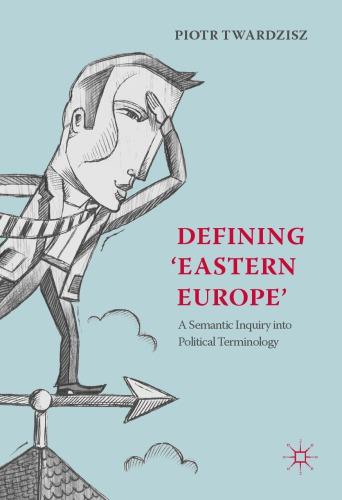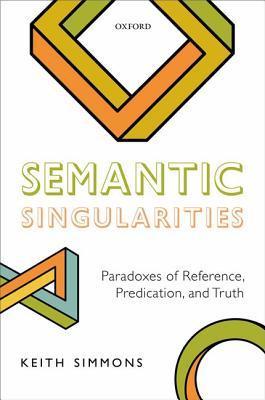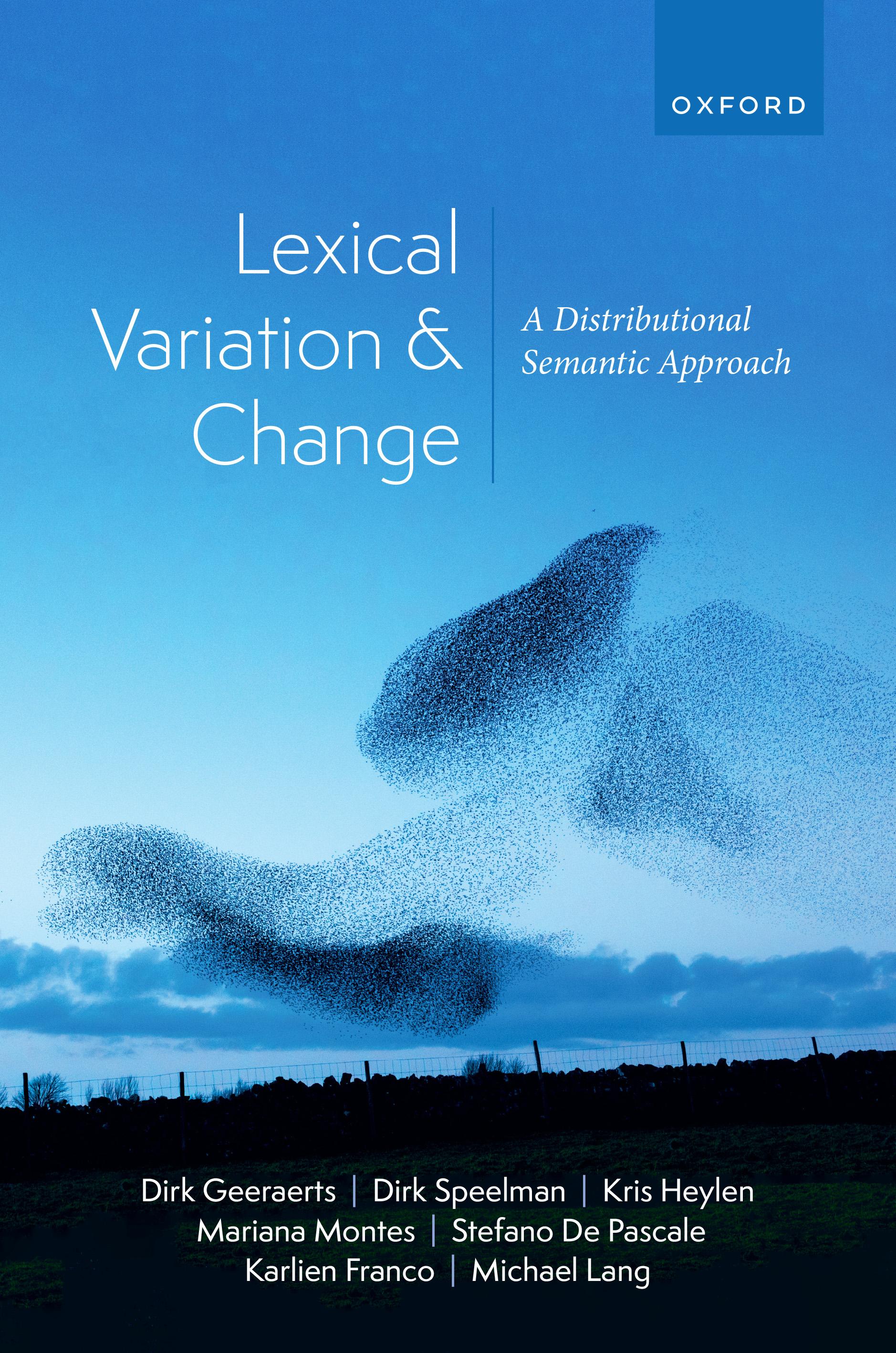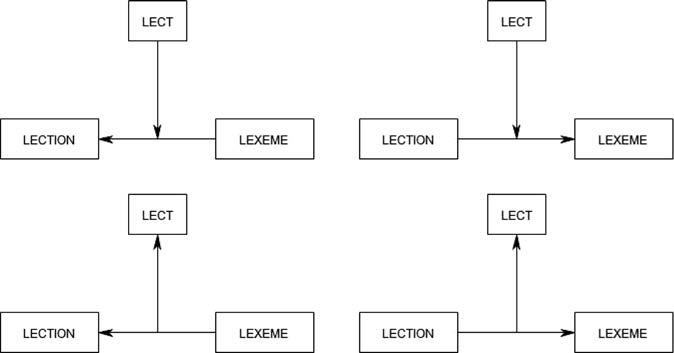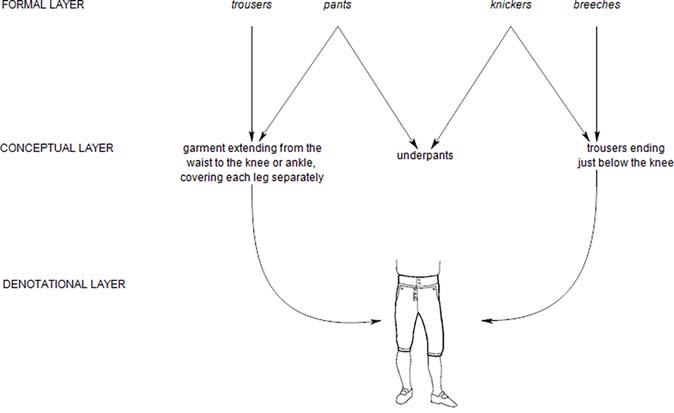Visit to download the full and correct content document: https://ebookmass.com/product/lexical-variation-and-change-a-distributional-semantic -approach-geeraerts/
More products digital (pdf, epub, mobi) instant download maybe you interests ...
Language Change, Variation, and Universals Culicover
https://ebookmass.com/product/language-change-variation-anduniversals-culicover/
An Anatomy of Chinese Offensive Words: A Lexical and Semantic Analysis 1st ed. 2021 Edition Adrian Tien
https://ebookmass.com/product/an-anatomy-of-chinese-offensivewords-a-lexical-and-semantic-analysis-1st-ed-2021-edition-adriantien/
Visual Experience: A Semantic Approach 1st Edition Wylie Breckenridge
https://ebookmass.com/product/visual-experience-a-semanticapproach-1st-edition-wylie-breckenridge/
Managing Organizational Change: A Multiple Perspectives Approach Ian Palmer
https://ebookmass.com/product/managing-organizational-change-amultiple-perspectives-approach-ian-palmer/
Functions and Change: A Modeling Approach to College Algebra 6th Edition Bruce Crauder
https://ebookmass.com/product/functions-and-change-a-modelingapproach-to-college-algebra-6th-edition-bruce-crauder/
Managing Organizational Change: A Multiple Perspectives Approach 3rd Edition – Ebook PDF Version
https://ebookmass.com/product/managing-organizational-change-amultiple-perspectives-approach-3rd-edition-ebook-pdf-version/
Evaluation in Organizations: A Systematic Approach to Enhancing Learning, Performance, and Change 2nd Edition, (Ebook PDF)
https://ebookmass.com/product/evaluation-in-organizations-asystematic-approach-to-enhancing-learning-performance-andchange-2nd-edition-ebook-pdf/
Defining ‘Eastern Europe’: A Semantic Inquiry into Political Terminology Piotr Twardzisz
https://ebookmass.com/product/defining-eastern-europe-a-semanticinquiry-into-political-terminology-piotr-twardzisz/
Semantic Singularities: Paradoxes of Reference, Predication, and Truth Keith Simmons
https://ebookmass.com/product/semantic-singularities-paradoxesof-reference-predication-and-truth-keith-simmons/
LexicalVariationandChange LexicalVariation andChange ADistributionalSemanticApproach DIRKGEERAERTS DIRKSPEELMAN KRISHEYLEN MARIANAMONTES STEFANODEPASCALE KARLIENFRANCO MICHAELLANG GreatClarendonStreet,Oxford,OX26DP, UnitedKingdom
OxfordUniversityPressisadepartmentoftheUniversityofOxford. ItfurtherstheUniversity’sobjectiveofexcellenceinresearch,scholarship, andeducationbypublishingworldwide.Oxfordisaregisteredtrademarkof OxfordUniversityPressintheUKandincertainothercountries
©DirkGeeraerts,DirkSpeelman,KrisHeylen,MarianaMontes,StefanoDePascale, KarlienFranco,andMichaelLang2024
Themoralrightsoftheauthorshavebeenasserted Somerightsreserved.Nopartofthispublicationmaybereproduced,storedin aretrievalsystem,ortransmitted,inanyformorbyanymeans,forcommercialpurposes, withoutthepriorpermissioninwritingofOxfordUniversityPress,orasexpressly permittedbylaw,bylicenceorundertermsagreedwiththeappropriate reprographicsrightsorganization.
Thisisanopenaccesspublication,availableonlineanddistributedunderthetermsofa CreativeCommonsAttribution—NonCommercial—NoDerivatives4.0 Internationallicence(CCBY-NC-ND4.0),acopyofwhichisavailableat http://creativecommons.org/licenses/by-nc-nd/4.0/.
Enquiriesconcerningreproductionoutsidethescopeofthislicence shouldbesenttotheRightsDepartment,OxfordUniversityPress,attheaddressabove
PublishedintheUnitedStatesofAmericabyOxfordUniversityPress 198MadisonAvenue,NewYork,NY10016,UnitedStatesofAmerica
BritishLibraryCataloguinginPublicationData Dataavailable
LibraryofCongressControlNumber:2023937657
ISBN9780198890676
DOI:10.1093/oso/9780198890676.001.0001
Printedandboundby
CPIGroup(UK)Ltd,Croydon,CR04YY
LinkstothirdpartywebsitesareprovidedbyOxfordingoodfaithand forinformationonly.Oxforddisclaimsanyresponsibilityforthematerials containedinanythirdpartywebsitereferencedinthiswork.
PARTI.THEORETICALPRELIMINARIES PARTII.DISTRIBUTIONALMETHODOLOGY 3.Parametersandproceduresfortoken-baseddistributionalsemantics
5.Makingsenseofdistributionalsemantics
6.Theinterplayofsemasiologyandonomasiology
PARTIV.LECTOMETRICMETHODOLOGY 7.Quantifyinglectalstructureandchange
PARTV.LECTOMETRICEXPLORATIONS 1.1Researchperspectiveswithinthelexeme-lection-lecttriangle 5
2.1Semasiologicalstructureof vest 35
2.2Graphicalrepresentationofthestepsinthedistributionalworkflow
3.12DrepresentationofDutch hachelijk ‘dangerous/critical’ 70
3.2Syntactictreeofexample(3.1)
3.3Syntactictreeofexample(3.2)
4.1Two2DrepresentationsofthesamemodelofDutch hachelijk ‘dangerous/critical’ 90
4.2Portalof https://qlvl.github.io/NephoVis/ asofAugust2022 94
4.3Level1for heffen ‘tolevy/tolift’ 95
4.4Level2forthemedoidsof heffen ‘tolevy/tolift’ 96
4.5Level1for heffen ‘tolevy/tolift’.Theplotiscolour-codedwithfirst-order part-of-speechsettings;NAstandsformissingdata,inthiscasethe dependencybasedmodels 97
4.6Level1for heffen ‘tolevy/tolift’withmedoidshighlighted 98
4.7Level2forthemedoidsof heffen ‘tolevy/tolift’,colour-codedwith categoriesfrommanualannotation.Hoveringoveratokenshowsits concordanceline 98
4.8Heatmapofdistancesbetweenmedoidsof heffen ‘tolevy/tolift’againstthe backdropofLevel2 99
4.9Heatmapofdistancesbetweenmedoidsof haten ‘tohate’againstthe backdropofLevel2 100
4.10Level2forthemedoidsof heffen ‘tolevy/tolift’,colour-codedwith categoriesfrommanualannotation.Brushingoveranareainaplotselects thetokensinthatareaandtheirpositionsinothermodels 101
4.11Frequencytableofcontextwordsofselectedtokensagainstthebackdropof Level2(medoidsof heffen ‘tolevy/tolift’) 102
4.12Level3forthethirdmedoidof heffen ‘tolevy/tolift’,withparameters 10-10.ALL.BOUND.WEIGHT.SOCALL.FOC 104
4.13Level3forthesecondmedoidof heffen ‘tolevy/tolift’,withparameters 10-10.ALL.BOUND.WEIGHT.SOCALL.FOC 104
4.14StartingviewoftheShinyAppdashboard,extensionofLevel3 106
4.15Topboxesofthe‘t-SNE’taboftheShinyAppdashboard,withactivetooltips
4.16Token-levelplotandbottomfirst-ordercontextwordsplotofthe‘t-SNE’ taboftheShinyAppdashboard,withonecontextwordselected
4.17Heatmapoftype-leveldistancesbetweenrelevantcontextwordsinthe ShinyAppdashboard 108
5.1Variableimportancepredictingdistancesbetweenallmodels 116
5.2Variableimportancepredictingaccuracyofmodels 117
5.3Conditionaltreepredictingtheaccuracyof herinneren ‘toremember/to remind’modelsaskNN 118
5.4Conditionaltreepredictingtheaccuracyof huldigen ‘tobelieve/tohonour’ modelsaskNN 118
5.5Modelsof heet ‘hot’and stof ‘substance,dust…’withparameters 5-5.LEX.BOUND.SELECTION.SOCALL.FOC 119
5.6Modelsof dof ‘dull’and huldigen ‘tobelieve/tohonour’withparameters 5-5.LEX.BOUND.SELECTION.SOCALL.FOC 120
5.7Modelsof haten ‘tohate’and hoop ‘hope,heap’withparameters 5-5.LEX.BOUND.SELECTION.SOCALL.FOC 121
5.8Modelof heilzaam withparameters10-10.ALL.BOUND.WEIGHT.SOCALL.FOC. Circlesare‘healthy,healing’,trianglesare‘beneficial’ingeneral 128
5.9Modelof herstructureren withparameters
3-3.ALL.BOUND.SELECTION.SOCALL.FOC
5.10Modelof grijs withparameters5-5.ALL.BOUND.ASSOCNO.SOCALL.FOC
5.11Modelof herroepen withparameters3-3.ALL.BOUND.SELECTION.SOCALL.FOC
5.12Modelof blik withparameters5-5.ALL.BOUND.WEIGHT.SOCNAV.5000
5.13Modelof schaal withparameters5-5.ALL.NOBOUND.WEIGHT.SOCALL.FOC
5.14Modelof herhalen withparametersREL1.SELECTION.SOCALL.FOC
5.15Modelof haken withparameters10-10.LEX.BOUND.SELECTION.SOCNAV.FOC
5.16Modelof huldigen withparameters 3-3.LEX.NOBOUND.SELECTION.SOCALL.FOC
5.17Networkofcontextwordsofthe huldigen ‘tohonour’cluster
5.18Modelof heffen withparameters10-10.ALL.BOUND.WEIGHT.SOCNAV.FOC
5.19Modelof hachelijk withparameters5-5.ALL.BOUND.WEIGHT.SOCALL.FOC
5.20Modelof herinneren withparameters 10-10.ALL.BOUND.WEIGHT.SOCNAV.5000
5.21Modelof heet withparameters5-5.ALL.BOUND.ASSOCNO.SOCALL.FOC
5.22Modelof stof withparameters5-5.LEX.BOUND.SELECTION.SOCALL.FOC
5.23Modelof horde withparameters5-5.ALL.BOUND.SELECTION.SOCALL.FOC
5.24Modelof geldig withparameters10-10.LEX.BOUND.SELECTION.SOCALL.FOC
6.1Modelsfor woedend and laaiend 157
6.2Modelsfor briljant and geniaal 158
6.3Scatterplotoft-SNEvisualizationofonemodelof vernielen and vernietigen, colouredbyfourclustersandshape-codedbyvariant 164
6.4Scatterplotwithcoloursformanualcodingofagenttypeandshapesfor variants 165
6.5Scatterplotwithcoloursformanualcodingofpatienttypeandshapesfor variants 166
6.6Clusteranalysesof vernielen and vernietigen inthefourdiachronic subcorpora 172
7.1Hierarchicaldestandardizationasincreasingdistancebetweenstrata 192
7.2Informalizationastop-downdecreasingdistancebetweenstrata 192
7.3Dehomogenizationasincreasingvariationwithinonestratum 193
8.1VisualizationofamodelforSECONDARY 211
8.2Exampleworkflowforcalculatingdistributionaltokenstability 216
9.1Hierarchical(de)standardizationscoresinBelgianDutch(caterpillarplot with‘models’ony-axis) 239
9.2Hierarchical(de)standardizationinNetherlandicDutch(caterpillarplot with‘models’ony-axis) 240
9.3Hierarchical(de)standardizationscoresinBelgianDutch(caterpillarplot with‘concepts’ony-axis) 241
9.4Hierarchical(de)standardizationscoresinNetherlandicDutch(caterpillar plotwith‘concepts’ony-axis) 241
9.5Hierarchical(de)standardizationscoresacrosssemanticfields
9.6(In)formalizationscoresforBelgianDutch(caterpillarplotwith‘models’ ony-axis) 245
9.7(In)formalizationscoresforNetherlandicDutch(caterpillarplotwith ‘models’ony-axis) 245
9.8(In)formalizationscoresforBelgianDutch(caterpillarplotwith‘concepts’ ony-axis)
9.9(In)formalizationscoresforNetherlandicDutch(caterpillarplotwith ‘concepts’ony-axis) 246
9.10(In)formalizationscoresacrosssemanticfields
9.11(De)homogenizationscoresforBelgianDutch(caterpillarplotwith ‘models’ony-axis)
9.12(De)homogenizationscoresforNetherlandicDutch(caterpillarplotswith ‘models’ony-axis)
9.13(De)homogenizationscoresforBelgianDutch(caterpillarplotswith ‘concepts’ony-axis) 250
9.14(De)homogenizationscoresforNetherlandicDutch(caterpillarplotwith ‘concepts’ony-axis)
9.15(De)homogenizationscoresacrosssemanticfields
ColourversionsoffigurescanbeconsultedviathefreePDFdownloadat https://global.oup.com/academic/product/lexical-variation-and-change-978019 8890676orviaOUP’sonlineplatformathttps://doi.org/10.1093/oso/9780198 890676.001.0001.
1.1Terminologicaldistinctionsindenotationallyexpandedlexicology: phenomena 11
1.2Terminologicaldistinctionsindenotationallyexpandedlexicology:subfields
1.3Differencesinconceptualonomasiologicalsalienceamongco-hyponyms
1.4Structuralandusage-orientedperspectivesinlexicalresearch 15
1.5OnomasiologicalprofilesforNONSENSEinthefictitiousTzaraandBall dialects 18
1.6OnomasiologicalprofilesforNONSENSEinthefictitiousArpandPicabia dialects
2.1Partialmatrixunderlyingtheanalysisof vest inFigure2.1
3.1Exampleoftype-levelvectors
3.2Smallexampleoftoken-levelvectorsofthreeinstancesof
5.1Examplesofsyntagmatic(columns)andparadigmatic(rows)perspectives onthelinguisticinterpretationofclouds 125
6.1Codingschemaforagentandpatientexpression
6.2Clustersinthemodelfor vernielen and vernietigen incontemporarydata 164
6.3Inflectedformsandspellingvariantsoccurringfor vernielen and vernietigen inthediachroniccorpus 169
6.4Frequencyof vernielen and vernietigen,andtotalnumberoftokensper century 170
6.5Parametersettingsinthecontemporarystudycomparedtoparameter settingsinthediachronicstudy 171
6.6Clustersinthemodelfor vernielen and vernietigen inthe16thand17th centuries 173
6.7Clustersinthemodelfor vernielen and vernietigen inthe18thcentury 174
6.8Clustersinthemodelfor vernielen and vernietigen inthe19thcentury 175
6.9Clustersinthemodelfor vernielen and vernietigen inthe20thcentury 176
6.10Summaryoftheclusteranalysesof vernielen and vernietigen inthe subcorpora 177
9.1CorpuscompositionfortheDutchstandardizationstudy
9.3OverviewofparametersfortheDutchstandardizationstudy
9.4Downsamplingschemeforconceptsizes
9.5OverviewofdestandardizationscoresinBelgianDutchandNetherlandic Dutch
9.6Summaryofstandardlanguagechangescoresacrosssemanticfields
10.1SizesofthesixlectsintheWeb/DialectscorpusintheCorpusdelEspañol
10.3OverviewofparametersfortheSpanishpluricentricitystudy
10.4Conceptsforwhichnomodelswereretained
10.5Completelyuniformconceptsresultingfromtheapplicationofa significancetesttothelectalcomparisons
10.6Overviewoftheconceptsbymodelretention
10.7U-valuesforallthree AnyMod tokensetsfrombothapan-Hispanicand pan-Americanperspective
10.8U-valuesforallthree 19+Mod tokensetsfrombothapan-Hispanicand pan-Americanperspective
10.9U-valuesforallthree<18Mod tokensetsfrombothapan-Hispanicand pan-Americanperspective
10.10Characteristicsofthethreegroupsbasedonmodelretention
Introduction Incorpuslinguistics,distributionalsemanticsembodiestheideathatthecontext inwhichawordoccursrevealsthemeaningofthatword.Bywayofillustration,considerthewords underground and subway,bothreferringtosubterranean railwaysystems.Thesynonymyrelationshipthatexistsbetweenthewordsmay berecognizeddistributionallybecausetheybothco-occurfrequentlywithwords like line, station, terminal, urban, crosstown, northbound, passenger, transit, train, run, operate.Thatistosay,thesimilardistributionofthewords underground and subway overcontextsfeaturingitemslike line, station, terminal,andsoon tellsussomethingaboutthemeaningofthetwowords.Importantly,thereare computationaltechniquesthatallowustoidentifythesimilarityinthedistributionalpatterningof underground and subway.Thosetechniquescanrecognize that underground and subway aresemanticallycloserthan,say, subway and sunshine.But underground alsohasthemeaning‘asecretorganizationfightingthe establishedgovernmentoroccupationforces’,whichco-occurswithwordslike clandestine,resistance,insurrection,attack,army,hidden,andwhichthusblursthe synonymyrelationshipwith subway. Amorefine-graineddistributionalapproach thentriestomodel,nottheoverallsimilaritybetween underground and subway, butthesimilaritybetweentheoccurrencesof underground inthesense‘subterraneanrailway’andthoseinthesense‘resistancemovement’.Suchamoredetailed typeofdistributionalsemanticsiscalleda token-based approach,whereatokenis anyofthespecificoccurrencesofthewords,incontrastwithatype-basedapproach thatonlylooksatthelevelofthewordsasawhole.Computationally,token-based approachesgroupoccurrencestogetherbasedontheirsemantic(read:distributional)similarity,justlikeatype-basedapproachgroupswordsassuchtogether. Sointhecaseof underground,youexpecttocomeacrossagroupoftokensfor the‘subterraneanrailway’senseandanotherforthe‘resistancemovement’sense, andwhenyouaddtheoccurrencesof subway tothemodel,youexpecttofind themintermingledwiththegroupof underground tokensthatrepresentsthe‘subterraneanrailway’sense.Ifwerefertosuchclustersofgrouped-togethertokens asclouds—tokenclouds—thenthedistributionalapproachconsistsofanalysing configurationsoftokencloudstoseewhatlighttheyshedonthemeaningsofthe expressions.
Onemajorgoalofthepresentmonograph,then,istoexploretheinsandouts ofadistributional,token-cloud-basedapproachtowordmeaning.Whatdoesit involve,inwhatflavoursdoesitcome,howefficientlycanitbeimplemented,and whatexactlyisitssemanticimport?Thestakesforcorpussemanticsarehigh:if
distributionalmodellingatthelevelofindividualtokensofwordsworkswell,the automatedorsemi-automatedanalysisofmeaninginlargetextcorporacanbe broughttoanextlevelofdetailandprecision.Thereisalsoaverypracticalside tothemethodologicalobjectivesofthebook.Thetoolsandalgorithmsthatwe willusearemadeavailableforpublicuse,andsothebookcanalsobeseenas aportfolioofsamplestudiesthatmightinspireotherresearchers.Atthesame time,wewillpointouttherestrictionsonthekindofdistributionalmodelling thatwehaveimplementedandargueforsomecautionregardingitsintroduction inlinguisticsemantics.Itturnsoutthatthesemanticinformationpickedupbydistributionalmodelsdoesnotcorrespondinastableandstraightforwardwaywith theinformationalinguistmaybelookingforandthisrecognitioncallsforspecific measuresastohowdistributionalmodelsmaybeincorporatedintoalinguistic workflow.
Butapartfromthismethodologicalpurpose,thebookhasanequallyimportant theoreticalgoal.Ourexplorationofdistributionalsemanticscontinuesalexicologicallineofresearchthatwasdevelopedoverthepastquartercenturyinthe QuantitativeLexicologyandVariationalLinguistics(QLVL)researchgroupat theUniversityofLeuven.Situatedwithinthebroadcontextofcognitivelinguistics,thisresearchlinetranslatesthecognitivelinguisticinterestincategorization phenomenaandsemanticvariabilityintoaresearchprogrammethattakesthe interplayofsemasiological,onomasiological,andlectalvariationasitscorequestion.Tobrieflyandsimplisticallyunpackthisterminologicaltriad(detailsfollow inaseparatechapter):semasiologicalvariationlooksfromawordtoitsmeanings;itstudiespolysemy,likethevarioussensesof underground.Onomasiology reversestheperspectiveanddescribeshowagivenmeaningcanbeexpressedby variouswords,likethesynonymyofundergroundandsubwayinthe‘subterranean railway’sense.Lectalvariationinvolvesthewayinwhichdiversityalongsociolinguistic,stylistic,geographical,andsoondimensionsinfluencessemasiologicaland onomasiologicalphenomena,liketheobservationthat underground istypically BritishEnglishand subway typicallyAmericanEnglish.Thislectalperspective includesaso-calledlectometricone:measuringthefrequenciesof underground andsubwayasexpressionsfor‘subterraneanrailway’inBritishandAmericantexts allowsustocalculatehowcloselexicalusageinthetwovarietiesiswithregard toeachother,andtoaddressthequestionwhethertheyaregrowingtogetheror apart.Thepresentvolumewilldetailthisframeworkandexaminehowtokenbaseddistributionaltechniquesmightbeusedtoscaleuptheresearchtothelevel oflarge-scalecorpora.Althoughwewillnotexhaustivelycoverallthedimensions oftheprogramme,thevariousstudiesshowcasingthedistributionalmethodwill treatcrucialcomponentsofthetheoreticalframeofreference:thedetectionof polysemy,theinterplayofsemasiologicalandonomasiologicalvariation,thetreatmentoflexicalvariationasasociolinguisticvariable,andtheuseofthosevariables tomeasureconvergenceordivergencebetweenlanguagevarieties.
Thebookisstructuredinfivepartsoftwochapterseach.Thefirstsetoftwo chapters,Theoreticalpreliminaries,introducestheframework.Chapter1describes thevariousperspectivesthatmaybetakeninlexicalvariationresearch,andhow thesehavesofarbeencoveredinexistingresearch.Chapter2laysouttheconceptualfoundationsofatoken-baseddistributionalmethod.Theremainingeight chaptersfallintotwogroups.Afirstsetoftwotimestwochaptersdealswith semasiologyandonomasiology,thatis,withtherelationshipbetweenlexical expressionsandtheirmeanings,andhowthismaydifferoverchronologicalperiodsandlanguagevarieties.Asecondgroupoftwotimestwochaptersreverses theperspective.InChapters3to6,weareinterestedinhowlectalvariationmay influencelexicalvariation.InChapters7to10,weareinterestedinwhatlexical variationhastosayaboutlectalvariation.Ineachsetoftwotimestwochapters, thefirstpairofchaptersisdevotedtomethodologicalissueswhilethesecond pairillustratesthemethodologywithcasestudies.Accordingly,the Distributional methodology partintroduces,inChapter3,thetechnicalspecificsofthedistributionalsemanticworkflowwewilluse,andinChapter4thevisualizationtoolthat wehavedevelopedtoexploreitsoutcome.Thechaptersinthe Semasiologicaland onomasiologicalexplorations partputthisexplorationintopractice.UsingDutch materials,Chapter5examineshowfaradistributionalapproachcantakeusonthe pathofsemanticanalysis,andChapter6appliesthedistributionalmethodtothe interplayofsemasiologyandonomasiologyinlexicalsemanticchange.Thefinal fourchaptersaresimilarlysplitupbetweentwomethodologicalandtwodescriptivechapters.The Lectometricmethodology partintroducesthevariousstepsin alectometricworkflow.WhileChapter7introducestheformulaethatuselexical variationtoquantifytherelationshipbetweenlanguagevarieties,Chapter8specifieshowatoken-baseddistributionalmethodidentifiesthesetsofsynonymous expressionsthatprovidethebasisforthatquantification.Thechaptersinthefinal part,Lectometricexplorations,illustratethelectometricworkflow.Chapter9looks diachronicallyattheevolutionofDutch.Chapter10presentsasynchronicview ofinternationalvarietiesofSpanish.Thebookcloseswithaconclusiondetailinginwhatwaystheresearchprogrammecanbefurtherdeveloped—andreaders beware:thereareplentyofthem.
Inlightofthisoverview,webelievethebookoffersthefollowinguniqueand innovativefeatures.First,itpresentsa comprehensiveviewoflexicalvariation, basedonthedistinctionbetweensemasiologyandonomasiology,andtheaddition ofalectaldimension.Bydescribinghowthesedistinctionsdefinedifferentperspectivesforlexicalresearch,andhowthedifferentphenomenainteract,thebook drawsamoreadequatepictureoftherichnessandcomplexityoflexicalphenomenathancanbefoundintheexistingliterature.Inparticular,bytreatinglexical variationasasociolinguisticvariableinthesenseofvariationistsociolinguistics, therelationshipbetweenlanguagevarietiescanbequantifiedatanaggregatelevel
basedonsuchvariables.Themonographshowshowsuchalexicallectometrycan bedeveloped,andhowitcanprofitfromdistributionalmethods.
Second,bycomparingthesemanticclassificationsproducedbycount-based distributionalmodelswithmanuallyannotateddisambiguateddata,weoffera criticalinsightintothemachineryofdistributionalmodelling.Whereasacomputationalperspectiveondistributionalmethodsisprimarilyconcernedwiththeir successinmodellinglinguisticphenomena,weaimforadeeperunderstandingof themechanismsbehindthoseresults:howtechnicalchoiceswithregardtothedistributionalprocessinfluencewhichtextualinformationispickedupbythemodels, andhowthatrelatestoahumaninterpretationofthedata.Crucially,ouranalysisdemonstrates,first,thatthereisnoone-to-onerelationshipbetweenthetoken clustersthatfalloutofadistributionalmodellingandwhatwouldtraditionallybe considereddifferentsenses,andsecond,thatthereisnosinglechoiceofmodelbuildingparametersthatisoptimalacrosstheboard,thatis,thatyieldsthebest possiblesolution(theoneclosesttoahumanperspective)foranylexicalitem.
Third,thebookisaccompaniedbyasetof digitaltools supportingtheanalytic workflowsdemonstratedinthecasestudies.Ontheonehand,someofthesetools involvePython3andRpackagesusedtoextractinformationfromcorpora,create distributionalmodels,andapplyclusteringandotherstatistical,viz.lectometric, analyses.Ontheother,visualizationtoolshavebeendevelopedwithinthecontextofthesemasiologicalworkflowforthequalitativeexaminationoftoken-level models.Theavailabilityofthesetoolsgreatlyenhancestherelevanceofthebook asasourceoffurtherresearch.
Theseassetssuggestforwhichgroupsofreadersthemonographmaybeof interest.Semanticistsandlexicologistswillbeinterestedintheformulationof acomprehensiveviewoflexicalvariation,intheexplorationofthepossibilitiesandlimitsoftoken-baseddistributionalsemantics,andinthetoolswe offerfortheincorporationoftoken-baseddistributionalmodellinginlexicaland semanticresearch.Computationallinguistswillbeinterestedinthedistributional workflowsweoffer,withtheiraccompanyingtools,andourexplorationofthepossibilitiesandlimitsofatoken-baseddistributionalapproach.Sociolinguistsand historicallinguistswillbeinterestedinourtreatmentoflexicalvariationasasociolinguisticvariable,andthesynchronicanddiachroniclexicallectometrybased onit.
Becauseweintendtoreachadiverseaudienceoflinguists,thetextiswritten withminimalassumptionsregardingbackgroundknowledge.Specifically,thefirst twochaptersaremeanttobridgethegapbetweendescriptivelyorientedlinguists, whomayneedanintroductiontothemodusoperandiofdistributionalsemantics, andmoretechnicallymindedresearchers,whomaybeunfamiliarwiththevariety ofperspectivesindescriptivelexicalandsemanticresearch.Inaddition,because thetrajectorywewilldescribeisonewithmanyoptionalturnsandsideways,we
willendeachchapterwithasummarythatwillhelpthereadertotracktheprogress oftheargument.
TheprojectfromwhichthismonographemanateswasfundedbytheResearch CounciloftheUniversityofLeuven(projectC16/15/023,withDirkGeeraertsas principalinvestigator).Apartfromtheauthorsofthepresentvolume,participants intheprojectincludedBenediktSzmrecsanyi,StefaniaMarzo,WeiweiZhang,Tao Chen,ChristianAndersen,andKristinaGeeraert.Althoughthepresenttextisa collectiveproduct,resultingfromseveralyearsofjointresearchefforts,theauthors havecontributedindifferentdegreestothevariouschapters.DirkGeeraertswas leadauthorforChapters1,2,and7,MarianaMontesforChapters4and5,andfor Chapter3togetherwithKrisHeylen.KarlienFrancotooktheleadforChapter6, StefanoDePascaleforChapter9,andMichaelLangforChapter10.StefanoDe PascaleandKarlienFrancowerejointlyresponsibleforChapter8.
PARTI THEORETICALPRELIMINARIES Twointerwovenstrandsofresearchdeterminetheorganizationofourmonograph:adescriptiveone,focusingonlexicalvariation,andamethodologicalone, focusingondistributionalcorpussemantics.Inthisfirstpartofthebook,two chapterspresentthebasicsandthebackgroundofbothstrands,with Chapter1 introducingthedescriptiveframework,andChapter 2 informallyexplainingthe essentialsofdistributionalvectorsemantics.Bothchaptersnotonlylayoutthe conceptualgroundworkforthesetopics,butalsosituatetheminawidercontext ofexistinglinguisticresearch.
1 Lexicalvariationandthe lexeme-lection-lecttriangle Asourinvestigationissituatedatthecrossroadsoflexicalvariationresearchand distributionalsemantics,wehaveadoublebackgroundtodescribe.Inthischapter, weintroducethefirstofthesetwobackdrops:whatmodeloflexicalvariationdo westartfrom,wheredowesituateourownresearchwithinthatfield,andhow dowerelatetopreviousresearch?Thefirstsectionofthechapterchartsvarious conceptualperspectivesthatmaybetakeninlexicalvariationstudies;specifiesthe focusofourresearchinlightofthosealternatives;andindicateshowourchoice ofperspectivetranslatesintothestructureofthemonograph.Thesecondand thirdsectionthendetailourchoiceoffocus.Thethirdsectioninparticularintroducesthelectometricperspectivethatplaysacentralroleinlaterchapters,from Chapter 7 onward.Thefinaltwosectionssketchtheresearchbackground:onone hand,lexicalstudiesinthebroadercontextoflinguisticvariationresearch,onthe other,ourlocalresearchcontext.Thepresentstudycontinuesalong-termresearch linewithintheQuantitativeLexicologyandVariationalLinguisticsresearchgroup attheUniversityofLeuven,andaccordingly,weneedtoprovidesomedetailabout previousworkandhowthepresentapproachbuildsonearlierachievements.
1.1 Choicesoflexicologicalperspective Imagineapairoftrousersendingjustbelowtheknee,tightenedroundthelegso thatthebottomendisslightlybaggy.Howwouldtheybecalled?Severalterms exist: knickerbockers, knickers,and breeches.Atthesametime,theycouldsimplybereferredtoas trousers,butthentheiteminquestionwouldbecategorized differently.Itwouldthennotbeidentifiedasamemberofthespecificcategory BREECHES‘pairoftrousersendingjustbelowtheknee,tightenedroundtheleg (etc.)’thatreceivesaunique,category-specificnamewithknickerbockersorknickers or breeches,butitwouldbeidentifiedasamemberofthebroadercategory TROUSERS‘garmentextendingfromthewaistdowntothekneeortheankle, coveringeachlegseparately’.(Typographically,wewillbeusingsmallcapsfor conceptsorcategories,specificallywhentheyarerepresentedbyvarioussynonymousexpressions.Italicsareusedforlexicalforms,anddefinitions,glosses,or
LexicalVariationandChange.DirkGeeraerts,DirkSpeelman,KrisHeylen,MarianaMontes,StefanoDePascale,Karlien Franco,andMichaelLang,OxfordUniversityPress.©DirkGeeraerts,DirkSpeelman,KrisHeylen,MarianaMontes, StefanoDePascale,KarlienFranco,andMichaelLang(2024).DOI:10.1093/oso/9780198890676.003.0001
explanationswillappearwithinquotes.)Buthowuniquearetermslike knickerbockers and knickers?Atleastfor knickers,thereisapolysemytobeconsidered, becauseitmayalsosignify‘underpants’,andthesynonymybetween knickers and knickerbockersdoesnotextendtothissecondsenseofknickers.Asimilarsituation actuallyholdswithregardto trousers:itissynonymouswith pants,butinapolysemoussense, pants issynonymouswiththe‘underwear’readingof knickers.In addition,thereislectalvariationinthedistributionoftheterms.Withoutbeing toodetailedaboutit,wemaynotethattrousersistypicallyBritishEnglishwhereas itssynonym pants (like knickerbockers incomparisonto breeches)isAmerican English,andaccordingly,the‘underwear’senseof pants isnotcommoninAmericanEnglish(likethatof knickers).Termslike typically areimportanthere:the lexicalchoicesareseldomofablack-and-whitenature,butmoreofteninvolve preferentialpatterns.
Thisbriefexample,towhichwewillcomebackinSection1.2,isstructured alongtwobasicdimensions.Thefirstonelinkslinguisticformstoreadings, whereasthesecondonebringsindifferentlanguagevarietiesanddescribeshow theassociationbetweenformandsemanticsdiffersaccordingtothedialect(inthe broadestpossiblesenseoftheterm)underconsideration.Crucially,bothdimensionscanbetraversedintwodirections.Ifyoustartfromalexicalitemand describethesemanticsofhowitisused,youtakea semasiological perspectiveand yourinterestbasicallylieswithpolysemy.Butifyoufocusonsynonymy,youlook fromthesemanticleveltothelevelofforms,describinghowameaningcanbe expressedbyvariouslexicalitems;thisisanonomasiologicalperspective.Thevariationaldimensioncansimilarlybesubjectedtoaperspectivalswitch.Ontheone hand(andthisisthemostcommonview),youcantaketheassociationofforms andmeaningsasaresponsevariableandinvestigatehowthatassociationchanges whenyoucomparedifferentlanguagevarieties.Ontheotherhand,therelationshipbetweenthosevarietiescanbeyourresponsevariable:ifyouaggregateovera largerpartofthevocabularyanditssemasiological/onomasiologicalcharacteristics,whatdoesthattellyouaboutthelanguagevarietiesinwhichthatvocabulary appears?Howclosearethey,andifyoulookovertime,aretheygrowingapartor growingtogether?Thefirstoftheseperspectives,lookingfromvarietiestovariable word-meaningpairs,maybecalled variationist,becauseitsoutlookcorresponds withthatofvariationistlinguisticsasthemajorbranchofsociolinguisticsinitiatedbyLabov’sworkfromthe1960s.Thesecondperspectiveisa lectometric one, becauseitfocusesonmeasuringdistancesamonglects. Lect inthisdefinitionisa covertermforallkindsoflanguagevarieties.IntheterminologyofCoseriu(1981), thisvarietyofvarietiesmaybestructuredalongfourcross-classifyingdimensions: adiatopicone,involvingthedialects,regiolects,chronolects,nationalvarieties, andsoon,usedindifferentpartsandlocationsofalinguisticarea;adiastraticone, involvingsociolectsbelongingtodifferentsocialgroups;adiaphasicone,involvingthedifferencesofstyleandregisterthatshowupindifferentspeechsituations
andcommunicativecontexts;andadiachronicone,involvingthechronological developmentandthehistoricalstagesofalanguage.Lectometryhassofarprimarilybeenanenterprisewithadiatopicperspective,butinaccordancewitha genericconceptionof lect,wethinkofitasageneralizationofthatdialectometric tradition.(Ondialectometry,see Goebl2011, WielingandNerbonne2015,and thediscussioninSection1.3.)
Giventhesetwodimensionsandtheassociatedperspectivalswitches (semasiological-onomasiological,variationist-lectometric),thescopeofourstudy canbedescribedintermsofwhatwewillcallthe lexeme-lection-lecttriangle.Terminologically,lexemesarethelexicalitemsunderinvestigation,andalectionisthe specificreadingwithwhichsuchawordappearsinatext(likewhether,tocome backtotheexample,knickersisusedinan‘underwear’readingora‘breeches’reading).Inthesenseintendedhere, lection isaratheroutdatedphilologicalterm,and weareadmittedlyselectingitlargelyforitsalliteratingqualities.Butthedefinition itreceivesinTheNewShorterOxfordEnglishDictionaryas‘aparticularwayof readingorinterpretingapassage;areadingfoundinaparticularcopyoredition ofatext’,adequatelycaptureswhatisofconcerntoushere,viz.themeaning-incontextofaword,theparticularinterpretationwithwhichitisusedinagiventext passage. Lect,asindicated,isageneraltermforallkindsoflanguagevarieties.
Lexemes,lections,andlectsinteract,andtalkingabouta lexeme-lection-lect triangle providesuswithahandyimagetoschematicallyrepresentthevarious aspectsofthatinteraction—orperhapsmoreprecisely,thecombinationsofthe twoperspectivaldimensionsthatweintroducedabove:seeFigure 1.1.Atthebase ofthetriangle,thedifferencebetweenasemasiologicalandanonomasiological perspectiveisexpressedbythedirectionofthearrowlinkinglexemeandlection.
Figure1.1 Researchperspectiveswithinthelexeme-lection-lecttriangle
Thepanelsontheleft-handsideembodyasemasiologicalperspective:looking fromlexemestotheirreadings.Thepanelsontherightembodytheconverse,onomasiologicalperspective:lookingfromreadingstotheformsthroughwhichthey areexpressed.Orthogonaltothesemasiological/onomasiologicaldimension,the perpendicularlinerepresentstheotherbasicperspective.Inthetoppanels,lectal variationisanexplanatoryvariable:ifyoulookateithersemasiologicaloronomasiologicalvariation,towhatextentisitinfluencedbylectaldiversity?Inthe bottompanels,theperspectiveisreversed,andlectalvariationbecomesaresponse variable:ifyouaggregateovereithersemasiologicaloronomasiologicalvariation, whichlectalstructureemerges?
Thevariouspartsofthepresentmonographtaketheirstartingpointinthese perspectives.PartIII,Semasiologicalandonomasiologicalexplorations,focuseson thetop-leftandthetop-rightapproaches. PartV, Lectometricexplorations,deals withthebottom-rightapproach.Thebottom-leftperspective—semasiological lectometry—willnotfeatureseparatelyinthevolume(butsee Speelmanand Heylen2017 foranexample).Therearetworeasonsfortheomission.First,if youstudyasampleofthevocabularythatislargeenough,thelectalstructure thatemergeswillbethesame,regardlessofwhetheryousumoversemasiological differencesorwhetheryousumoveronomasiologicaldifferences:everysemasiologicaldifferencebetweenlectAandlectBwillalsoshowupifyoustartfromthe onomasiologicalside,andviceversa.Ofcourse,thisisonlyanargumentinprinciple,becausestudyingtheentirevocabularyisnotfeasible.Second,however,there isatraditionincontemporaryvariationistlinguisticstostudylectaldifferences fromaformalpointofview,thatis,toassumethatlinguisticdifferencesbetween dialects,sociolects,andwhathaveyouarebestseeninalternativelectalpreferencesforfunctionallyequivalentformsofexpression.Thisideaiscapturedbythe notionofsociolinguisticvariable.Putsimply,asociolinguisticvariableinthesense ofcontemporarysociolinguistics(see Labov1966)isasetofalternativewaysof expressingthesamelinguisticfunctionorrealizingthesamelinguisticelement, whereeachofthealternativeshassocialsignificance:‘Socialandstylisticvariationpresupposetheoptionofsaying“thesamething”inseveraldifferentways: thatis,thevariantsareidenticalinreferenceortruthvalue,butopposedintheir socialand/orstylisticsignificance’(Labov1972:271).Assuch,asociolinguistic variableisalinguisticelementthatissensitivetoanumberofextralinguisticindependentvariableslikesocialclass,age,sex,geographicallocation,ethnicgroup, orcontextualstyleandregister.Classicalcasesofsociolinguisticvariablesinvolve pronunciation.Pronouncingthet inbutter asaglottalstopisindicativeofaCockneyaccent,justlikeafullpronunciationofthe n in chemin istypicalofsouthern FrenchincontrastwithstandardFrench.Exampleslikethesehadbeenstudiedfor alongtimeintraditionaldialectology,butmodernsociolinguisticsasitemerged inthe1960senlargedthescopeofinvestigationbeyondthetraditionaldiatopic dialectstootherlects.Ifyouapplytheconceptofasociolinguisticvariabletothe
lexicon,youinevitablyreachanonomasiologicalperspective,becauseonomasiology(andmorespecifically,formalonomasiology)preciselyinvolvesalternative lexicalexpressionsforthesamesense.
Twomorethingsneedtobesaidaboutthewaywewillcovertheterrainoutlined above.Inthefirstplace,thesubsequentpartsofthetextbuildoneachother.PartI, Theoreticalpreliminaries,laysthegroundwork.PartsIIandIIIthenfocusonthe semasiologicalandonomasiologicalperspectivesthatbelongtotheupperlayerof Figure 1.1,whereas PartsIV andVtakealectometricpointofviewasinthelower layerofthefigure.Ineachofthesetwosets,thefirstpartisdevotedtomethodologicalissueswhilethesecondillustratesthemethodologywithcasestudies.Thus PartII,Distributionalmethodology,introducestheparticularsofthedistributional semanticworkflow,togetherwiththevisualizationtoolthatwewillusetoexplore itsoutcome. PartIII, Semasiologicalandonomasiologicalexplorations,putsthis explorationintopractice.Itexamineshowfaradistributionalapproachcantake usonthepathofsemanticanalysis(asweshallsee,thereareanumberofrestrictionsondistributionalinformationthatwillmakeusadoptacertainamountof cautionforthefurthersteps)andappliesthedistributionalmethodtotheinterplay ofsemasiologyandonomasiologyinlexicalsemanticchange. PartIV, Lectometricmethodology,introducesthevariousstepsinalectometricworkflow:howto determinetherelevantsetsofalternatingexpressionsandthecontextsinwhich theyalternateasequivalents(whatsociolinguisticsreferstoastheenvelopeofvariation),andhowtofeedthedistributionofthecompetingexpressionswithinthe envelopesintoacalculationoflectometricdistances. PartV, Lectometricexplorations,illustratesthisworkflow.Overallthen,thestructureofthetextembodiesa gradualbuild-up.ItisnotjustthatthechaptersinPartIIsmooththewayforthose in PartIII,andthosein PartIV for PartV,but(totheextentthatidentifyinglexicalsociolinguisticvariablesrequiresasemanticanalysis)PartsIIandIIItogether alsopreparethegroundforPartsIVandV.
Inthesecondplace,thedegreetowhichwewillcovertheperspectivallydefined domainsschematicallyrepresentedinFigure 1.1 willbynomeansbecomplete, evenapartfromtheabsenceofasemasiologicallectometricapproach.Ourpurposeistodefine,illustrate,andexplorearesearchprogramme,nottotreatit exhaustively—ifthatwouldbepossibleatall.Throughoutthechapters,wewill explicitlypointtoopenissuesandpossibilitiesforfurtherinvestigation.
Inthefollowingtwosectionsofthepresentchapter,wewilllookmoredeeply intothetwodimensionsandtheassociatedquestionsthatshapethestructureof thebookandthataregraphicallysummarizedinFigure 1.1.Alongthesemasiology/onomasiologydimension,Section1.2willconsiderthestatusofavectorspace approachfromthepointofviewofsemanticandconceptualanalysis.Alongthe variationist/lectometricdimension,Section1.3detailswhatitimpliestotreatlexicalvariationasasociolinguisticvariableintheLaboviansenseandtousethat variationasthebasisforlexicallectometry.
1.2 Semasiology,conceptualonomasiology,formalonomasiology TomovebeyondthesimpleviewofsemasiologyandonomasiologythatwasintroducedinSection1.1,andtobetterappreciatethewayinwhichdistributional corpussemanticscanbeincorporatedintolexicology,wehavetohighlighttherole thatfrequencyandsalienceplayincontemporarylexicaltheory.Thedistinction betweenonomasiologyandsemasiologyisafundamentaloneintheEuropean traditionoflexicologicalresearch,invokingtheSaussureanconceptionofthesign asconsistingofaformal signifiant andasemantic signifié:semasiologystartsout fromthesignifiant andconsidersthevarioussignifiésassociatedwithit,whileonomasiologytakesthereverseperspective.KurtBaldinger,aprominentlexicologist fromthestructuralistera(seeGeeraerts2010aforanoverviewofthevarioustheoreticalstagesinthehistoryoflexicalstudies),describedthedistinctionasfollows: ‘Semasiology...considerstheisolatedwordandthewayitsmeaningsaremanifested,whileonomasiologylooksatthedesignationsofaparticularconcept,that is,atamultiplicityofexpressionswhichformawhole’(1980:278).Thedistinction betweensemasiologyandonomasiology,inotherwords,equalsthedistinction betweenmeaningandnaming:semasiologytakesitsstartingpointintheword asaform,andchartsthemeaningsthatthewordcanoccurwith;onomasiology takesitsstartingpointinaconcept,andinvestigatesbywhichdifferentexpressions theconceptcanbedesignated,ornamed.Betweenboth,aswehaveemphasized, thereisadifferenceofviewpoint:semasiologystartsfromtheexpressionandlooks atitsmeanings,onomasiologystartsfromthemeaningandlooksatthedifferentexpressionsitoccurswith.Characteristically,atraditional,structuralistically inspiredviewofsemasiologyandonomasiologyconsidersonlytwolevels:thatof linguisticformsandthatoftheconceptsexpressedbythoseforms.Butifwego backtotheexamplediscussedinSection1.1,wemaynotethatatleastimplicitly thereisyetanotherleveltoconsider:thedenotationalone,wherewesituatethe thingsthatarebeingtalkedabout(and thing shouldevidentlybetakenbroadly here,asanythingthatcanbetalkedabouttobeginwith).InFigure 1.2,theoverall situationisrepresentedbyincluding,atthebottomlevel,apictureofareal-world pairofbreeches.Thatdenotationallevelliesoutsideoflanguage,andinasimple viewofthelexicon,theknowledgeassociatedwithithardlymatters.Thedefinition ofknickerbockersbelongstothelanguage,butwhatelseweknowaboutbreechesis encyclopaedicknowledgethatdoesnotbelongtolinguisticstructure.Theangleof viewofsuchastructuralistconceptionissotospeakrestrictedtotheupperlevels inthefigure.Sincetheemergenceofprototypetheoryinthe1970s,however,linguisticsemanticshasshiftedtoapositioninwhichtherelevanceofthelowerlevel isexplicitlyenvisaged.Inthefollowingpages,wewillfirstpresentanoverviewof thenewperspectivestriggeredbythisshift.Next,wewilldiscusshowthispointof viewcanbetranslatedtoadistributionalcorpusapproachandindicatewhichof theperspectivesunderconsiderationwillplayaroleintherestofthebook.
Figure1.2 Anexampleofdenotationallyexpandedlexicology
Regardingsemasiology,theincorporationofthedenotationalleveldrewthe attentiontoanumberofinterrelatedprototypicalityeffects.Theprototype-based conceptionofcategorizationoriginatedinthemid-1970swithRosch’spsycholinguisticresearchintotheinternalstructureofcategories(seeamongothers Rosch 1975)andwaslaterelaboratedinlinguisticlexicalsemantics(see Geeraerts1989; Taylor1989; Hanks2013).Fourprototype-theoreticalcharacteristicsarefrequentlymentionedinthelinguisticliterature.First,prototypicalcategoriescannot bedefinedbymeansofasinglesetofcriterial(necessaryandsufficient)attributes. Second,prototypicalcategoriesexhibitafamilyresemblancestructure,thatis,a structurelikethesimilaritiesthatexistbetweenrelatives(somehavethesametypicalhaircolour,somehavethesametypicallyshapednose,somehavethesame typicaleyes,butnonehaveallandonlythetypicalfamilytraits);thedifferent denotationalusesofawordhaveseveralfeaturesincommonwithoneormore otherreferents,butnofeaturesarecommontoall.Third,prototypicalcategories exhibitdegreesofcategorymembership;noteverymemberisequallyrepresentativeforacategory.Andfourth,prototypicalcategoriesmaybeblurredatthe edges.
Bywayofexample,considerfruit asreferringtoatypeoffood.Ifyouaskpeople tolistkindsoffruit,sometypescometomindmoreeasilythanothers.ForAmericanandEuropeansubjects(thereisclearculturalvariationonthispoint),oranges, apples,andbananasarethemosttypicalfruits,whilepineapples,watermelons, andpomegranatesreceivelowtypicalityratings.Thisillustratesthethirdcharacteristicmentionedabove.Butnow,considercoconutsandolives.Isacoconutor
anoliveafruitintheordinaryeverydaysenseofthatword?Formanypeople, theanswerisnotimmediatelyobvious,whichillustratesthefourthcharacteristic:ifwezoominontheleasttypicalexemplarsofacategory,membershipinthe categorymaybecomefuzzy.Acategorylike fruit shouldbeconsiderednotonly withregardtotheexemplarsthatbelongtoit,butalsowithregardtothefeatures thatthesecategorymembersshareandthattogetherdefinethecategory.Types offruitdonot,however,shareasinglesetofdefinitionalfeaturesthatsufficiently distinguishesfruitfrom,say,vegetablesandothernaturalfoodstuffs.Allareedible seed-bearingpartsofplants,butmostotherfeaturesthatwethinkofastypical forfruitarenotgeneral:whilemostaresweet,somearenot,likelemons;while mostarejuicy,somearenot,likebananas;whilemostgrowontreesandtreelikeplants,somegrowonbushes,likestrawberries;andsoon.Thisabsenceofa neatdefinitionillustratesthefirstcharacteristic.Insteadofsuchasingledefinition, whatseemstoholdtogetherthecategoryareoverlappingclustersofrepresentative features.Whereasthemosttypicalkindsoffruitarethesweetandjuicyonesthat growontrees,otherkindsmaylackoneorevenmoreofthesefeatures.Thisthen illustratesthesecondcharacteristicmentionedabove.
Theprototype-theoreticalexpansionofthescopeoflexicalsemanticstothe denotationallevelwasextrapolatedintwodifferentdirections:towardstheconceptuallevel,andtowardstheonomasiologicalperspective.Thefirstextrapolation involvesidentifyingprototypeeffectsbetweensensesratherthanwithinagiven sense.Initsoriginalform,andinthewaywehavesofardescribedit,prototypicalityinvolvestherelationshipbetweentheexemplarsofasinglesenseofanitem,that istosay,theentitiesthataresituatedatthedenotationallevelofFigure1.2andthat belongtogetherundertheumbrellaofoneofthesensessituatedattheconceptual level.Afterall,fruit canalsobeusedwithothermeaningsthantheonereferringto food,likewhenyouwouldtalkmetaphoricallyaboutthe bitterfruit (theresults, theconsequences)ofbadbehaviourorsorrymistakes—butalltheprototypicality effectsmentionedpreviouslyweresituated within thefoodsense.However,prototypetheoryasitdevelopedinlinguisticswasappliednotjusttotheinternal structureofasinglewordmeaning,butalsotothestructureofpolysemouswords, thatis,totherelationshipbetweenthevarioussensesthatalexicalitemexhibitsat theconceptuallevel.Inparticular,itwaspointedoutthatthestructureofpolysemy maytaketheformofasetofclusteredandoverlappingmeanings,whichmaybe relatedbysimilarityorbyotherassociativelinks,suchasmetaphorormetonymy. Becausethisclusteredsetismostlybuiltuproundacentralmeaning,theterm radialnetwork isoftenusedforthiskindofpolysemicstructure.Radialnetworks areapopularrepresentationalformatinlexicalsemantics;see Brugman(1988) foranearlyandinfluentialexample,andsee Geeraerts(1995) foracomparison withalternativeformsofrepresentationincognitivesemantics.Thisextrapolation fromawithin-sensesleveltoabetween-senseslevelimpliesthatanindiscriminateuseof prototypicality maysometimesbeconfusing,whenthewordisused
bothforthedominantsenseinapolysemousnetworkandthecentralcaseina denotationalset(Kleiber1990).Atthesametime,thepotentialissuesgofurther thantheterminologicalscopeof prototypical:asweshalldiscussinChapter 2, themutualdemarcationofsemanticentities—senses,andwithin-sensesversus between-senseslevels—isnotunproblematicinitsownright.
Thesecondextrapolationincorporatesthedenotationallevelintotheonomasiologicalperspective.Thisimpliesthatoneshouldnotjustlookfromthe conceptualleveltotheformallevel,identifyingrelationsofsynonymyandnearsynonymyamongexpressions,butthatoneshouldalsolookfromthedenotational leveltotheconceptuallevel,identifyingalternativeconceptualizationsofthesame chunkofreality.Terminologicallyspeaking,lexicalsemanticshasnotyetsettledon aconventionalnameforthisphenomenon,but categorization or conceptualconstrual shouldbegoodcandidates.IntheexampleofFigure 1.2,forinstance,the itemofclothingdepictedonthedenotationallevelmaybecategorizedasbreeches, butitmayalsobeidentifiedasapairoftrousers,andthenitisconstruedasa memberofadifferent,broadercategorythanwhenusing breeches.Theresulting pictureoftheinterrelatedtermsispresentedinTable 1.1;thecorrespondingsubfieldsoflexicologyinTable1.2.Theextensionofonomasiologytothedenotational levelimpliesthatwemaynowalsodistinguishbetween conceptualonomasiology, focusingontherelationshipbetweenthedenotationallevelandtheconceptual level,and formalonomasiology,focusingontherelationshipbetweentheconceptualandtheformallevel.Whereasconceptualonomasiologicalvariationinvolves thechoiceofdifferentconceptualcategoriesforareferent,formalonomasiologicalvariationmerelyinvolvestheuseofdifferentsynonymousnamesforthesame conceptualcategory.Thenamesjeansandtrousersfordenimleisure-weartrousers constituteaninstanceofconceptualvariation,fortheyrepresentcategoriesatdifferenttaxonomicallevels. Jeans and denims,however,arenomorethandifferent (butsynonymous)namesforthesamedenotationalentity.OnomasiologicalvariationasasociolinguisticvariableintheLaboviansense,then,belongstoformal onomasiology.
Theextrapolationofprototypetheorytoonomasiologygoesonestepfurther, though.Amajorconsequenceofprototypetheoryistogivefrequencyandsalience aplaceinthedescriptionofsemasiologicalstructure.Nexttothequalitative
Table1.1 Terminologicaldistinctionsindenotationally expandedlexicology:phenomena
SEMASIOLOGYONOMASIOLOGY
wordsw.r.t.conceptspolysemysynonymy conceptsw.r.t.referentsprototypicalitycategorization
